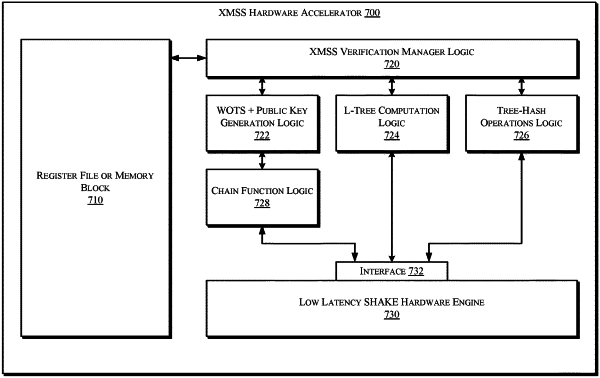| CPC H04L 9/3236 (2013.01) [H04L 9/0643 (2013.01); H04L 9/0852 (2013.01); H04L 9/0877 (2013.01); H04L 9/30 (2013.01); H04L 9/50 (2022.05)] | 13 Claims |

|
1. An apparatus comprising:
host processor circuitry; and
a hardware accelerator, coupled to the host processor circuitry, including a SHAKE hardware accelerator, the hardware accelerator comprising:
memory to store a set of Extended Merkle Signature Scheme (XMSS) inputs associated with multiple XMSS operations,
XMSS verification circuitry to manage multiple XMSS verification functions associated with the multiple XMSS operations, wherein
a first XMSS verification function is a public key generation to be performed by an execution of a chain function that is to use the SHAKE hardware accelerator to generate public key components,
a second XMSS verification function is L-tree computation that is to combine the public key components by using the SHAKE hardware accelerator,
a third XMSS verification function is a tree-hash computation that is to use an output of the L-tree computation and the SHAKE hardware accelerator to generate a root node, wherein the SHAKE hardware accelerator comprises a 1600-bit state register used to receive the set of XMSS inputs including one or more of a first set of inputs for each chain function, a second set of inputs for hashes involved in an L-Tree computation, a third set of inputs for a Merkle tree root node computation, or a 256-bit message input.
|